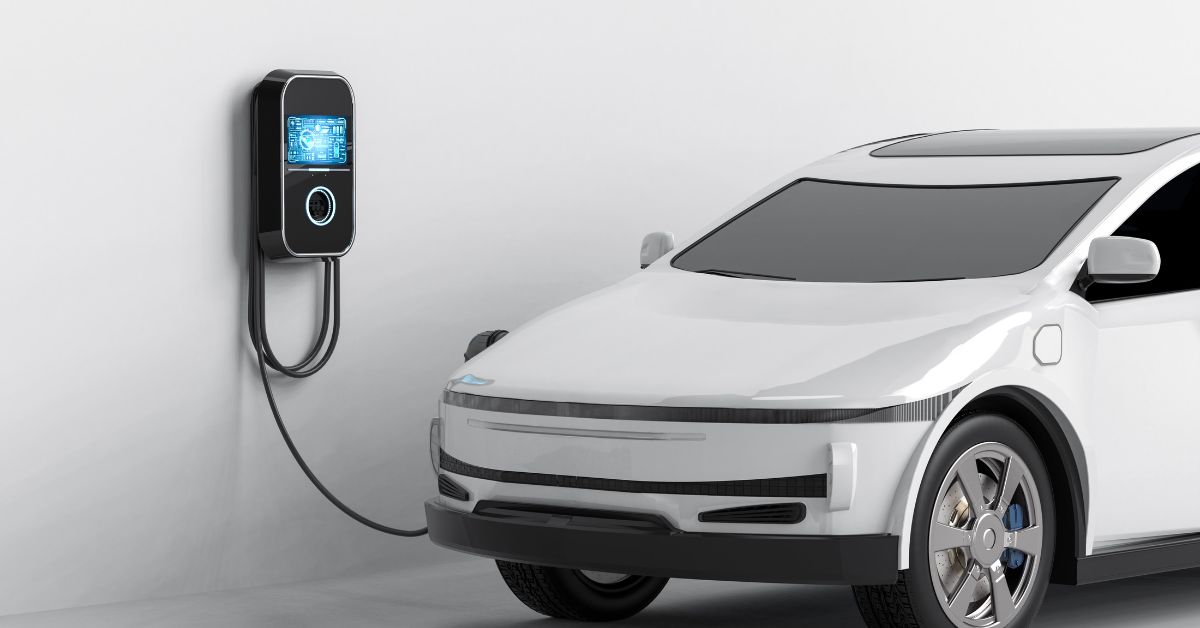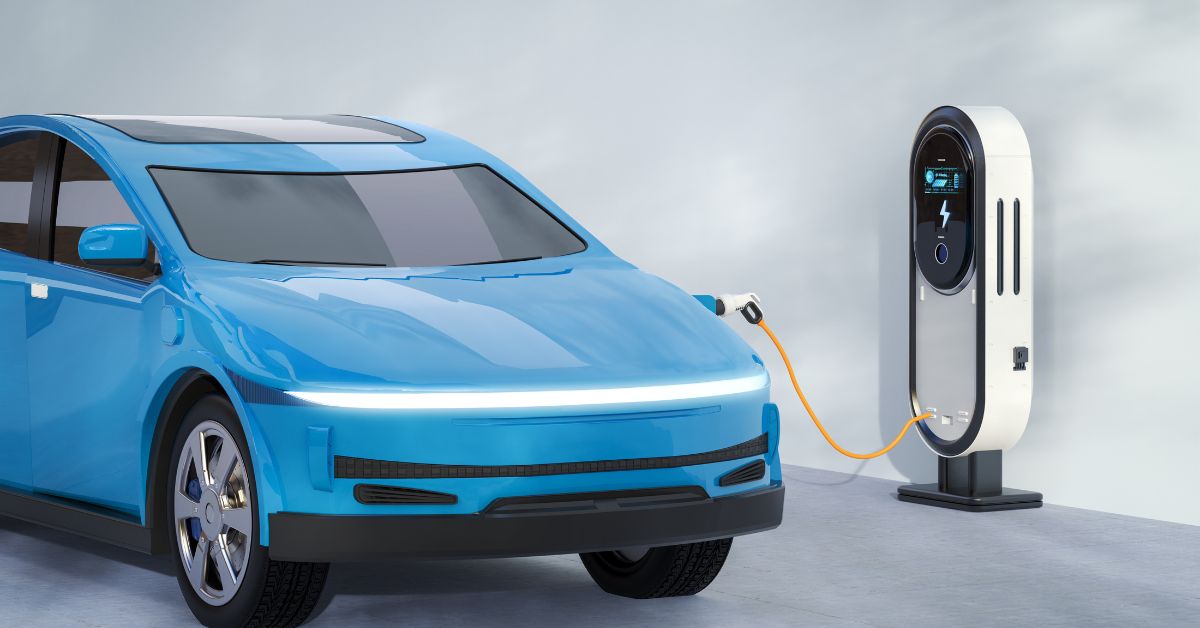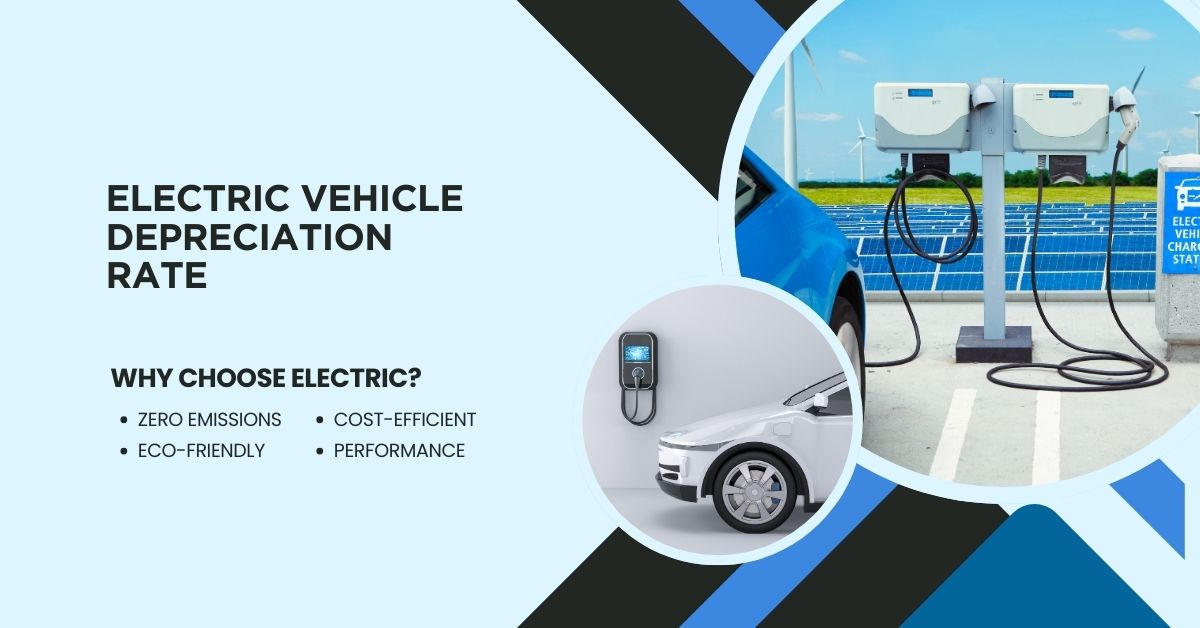Electric Vehicle Depreciation Rate
Electric Vehicle Depreciation Rate refers to the rate at which an EV’s value decreases over time. Typically, EVs experience a higher depreciation rate than traditional gasoline-powered vehicles, mainly due to factors like the rapid advancement of battery technology, the limited range of older models, and concerns about battery lifespan. However, depreciation rates can vary based on brand, model, demand for electric cars, government incentives, and overall market conditions.
Resale value is also affected by the availability of newer models with longer ranges and better features, making it crucial for potential buyers to assess long-term value before purchasing.
Table of Contents
Electric Vehicle Depreciation Rate: Understanding the Value Decline of EVs Over Time
Electric vehicles (EVs) have gained significant popularity in recent years, driven by advancements in technology, environmental awareness, and government incentives aimed at reducing carbon emissions. While the market has embraced EVs for their efficiency, reduced operating costs, and eco-friendly appeal, one critical aspect often overlooked by prospective buyers is the depreciation rate. Like all vehicles, EVs lose value over time, but the rate and factors influencing depreciation can differ significantly from traditional internal combustion engine (ICE) vehicles. This comprehensive guide will delve into the nuances of electric vehicle depreciation, exploring why it happens, how it compares to conventional cars, and what factors influence it.
What is Depreciation?
Depreciation is the process by which a vehicle loses value over time due to factors such as wear and tear, market demand, technological obsolescence, and external economic conditions. It’s one of the largest costs associated with vehicle ownership, often exceeding fuel, maintenance, and insurance costs over the lifetime of the car.

In the context of electric vehicles, depreciation reflects how much the car’s resale value drops from its original purchase price. Understanding depreciation is crucial for potential EV buyers, as it can significantly impact the overall cost of ownership. Depreciation rates can vary widely among different EV models, driven by factors such as brand reputation, battery life, range, and technological features.
Key Factors Influencing EV Depreciation Rates
- Battery Life and Degradation One of the most critical factors affecting EV depreciation is battery life. EV batteries degrade over time, leading to a reduction in the vehicle’s range and performance. Potential buyers of used EVs often worry about the state of the battery, as a diminished range can significantly impact the car’s usability and resale value.EV batteries typically last between 8 to 15 years, depending on usage patterns, charging habits, and environmental conditions. While most manufacturers offer warranties on their batteries (often around 8 years or 100,000 miles), the fear of costly battery replacements still lingers in the minds of second-hand buyers. This perceived risk contributes to higher depreciation rates compared to traditional vehicles.
- Technological Advancements The rapid pace of innovation in the EV market can lead to faster depreciation. As new models with better range, advanced features, and improved performance are introduced, older models become less desirable, even if they are still functional. For example, an EV with a range of 150 miles may have been considered sufficient a few years ago, but with newer models offering 300+ miles on a single charge, older models can lose value quickly. Additionally, software updates, autonomous driving features, and advancements in charging technology can make older EVs seem outdated, further accelerating depreciation. Consumers often prefer to buy the latest technology, pushing down the value of older EVs in the market.
- Brand Perception and Model Reputation The brand and model of an EV play a significant role in its depreciation rate. Premium brands like Tesla generally have lower depreciation rates compared to lesser-known or less reliable brands. Tesla’s strong brand reputation, continuous over-the-air software updates, and innovative features help retain value better than many of its competitors. On the other hand, lesser-known brands or those with models that have encountered reliability issues tend to depreciate faster. For example, early models from manufacturers who were still experimenting with EV technology often suffered from poor resale values due to perceived quality concerns.
- Incentives and Tax Credits Government incentives and tax credits play a dual role in the depreciation of EVs. While these incentives make EVs more affordable initially, they can also reduce the resale value of used EVs. Buyers in the second-hand market often expect to pay significantly less for a vehicle that was subsidized by government incentives when new. In markets where substantial incentives are available for new EV purchases, used EVs can struggle to compete on price, leading to steeper depreciation. As incentives phase out or decrease, this impact might lessen, potentially stabilizing depreciation rates in the future.
- Market Demand and Supply Dynamics The supply-demand balance in the used EV market significantly affects depreciation rates. As more EVs enter the market, particularly after lease terms end, the supply of used EVs increases, often outpacing demand. This oversupply can drive down prices and lead to higher depreciation rates. Demand for used EVs also varies by region. In areas with robust charging infrastructure, the resale value of EVs tends to hold up better. Conversely, in regions where charging stations are sparse, used EVs might depreciate faster due to perceived inconvenience.
- Model-Specific Factors: Range, Performance, and Features The specific features of an EV model, such as driving range, performance, and included technology, significantly influence its depreciation rate. Models with shorter ranges or fewer tech features often depreciate faster than those offering extended ranges and advanced infotainment or driver-assistance systems. For example, a used EV with an outdated navigation system or lacking modern connectivity features like Apple CarPlay or Android Auto might struggle to attract buyers in a market accustomed to these conveniences, resulting in higher depreciation.
- Cost of Ownership The cost of ownership, including maintenance, repairs, and charging, also affects depreciation rates. EVs generally have lower maintenance costs than ICE vehicles due to fewer moving parts and no need for oil changes. However, the potential cost of battery replacement can deter used car buyers, impacting depreciation. Furthermore, insurance costs for EVs can be higher due to the specialized nature of repairs and the high cost of batteries. These ownership costs are often factored into resale value, influencing how quickly an EV depreciates.
- Residual Value Projections Residual value is the estimated worth of a vehicle at the end of a lease or finance term and plays a crucial role in determining monthly payments for leased vehicles. Vehicles with higher projected residual values typically have lower lease payments, making them more attractive to consumers. Residual value projections for EVs have historically been conservative due to uncertainties around long-term battery performance and evolving technology. However, as data on battery longevity and EV performance becomes more available, these projections are becoming more accurate, influencing depreciation rates.
Comparing EV Depreciation with Internal Combustion Engine (ICE) Vehicles

- Higher Initial Depreciation Rates Studies indicate that EVs tend to depreciate faster than ICE vehicles in the first few years. This accelerated depreciation is primarily due to rapid technological advancements, range anxiety, and concerns about battery longevity. In contrast, traditional vehicles benefit from a more established market and slower technological changes, leading to more predictable depreciation patterns.
- Long-Term Depreciation Trends While EVs may depreciate faster initially, some models, especially those from well-regarded brands, tend to stabilize after a few years. For example, Tesla vehicles often hold their value better over the long term compared to other EV brands, partly due to continuous software updates that keep even older models current with the latest features.In contrast, luxury ICE vehicles, despite their appeal, can face steep depreciation rates due to high maintenance costs, fuel expenses, and rapidly declining desirability of older luxury models. Thus, while EVs depreciate quickly upfront, they can sometimes outperform certain ICE vehicles in long-term value retention.
- Impact of Fuel Prices The volatility of fuel prices can influence the depreciation of ICE vehicles more than EVs. When fuel prices are high, the demand for fuel-efficient and electric cars increases, supporting the resale value of EVs. Conversely, when fuel prices are low, ICE vehicles may retain value better, as the cost advantage of EVs becomes less pronounced.
- Effect of Regulatory Changes Government regulations and policies around emissions can directly impact the depreciation rates of ICE vehicles. As regulations tighten, older, less fuel-efficient ICE vehicles may see accelerated depreciation. Meanwhile, EVs, which are often exempt from emissions regulations, may benefit from more favorable depreciation trends.
Top EV Models with the Best and Worst Depreciation Rates
- Best Performing EVs in Terms of Depreciation
- Tesla Model 3: The Tesla Model 3 is often cited as having one of the best resale values among EVs. Thanks to its combination of strong brand loyalty, cutting-edge technology, and extensive charging network, the Model 3 holds its value remarkably well compared to competitors.
- Porsche Taycan: The Porsche Taycan is another high-performance EV that retains its value well. Its luxury appeal, strong performance, and brand cachet contribute to its lower-than-average depreciation rate among EVs.
- Chevrolet Bolt EV: The Chevy Bolt has shown a decent depreciation curve, especially considering its relatively affordable price point. Its long range and solid reliability ratings have helped it retain value better than many other non-premium EVs.
- Worst Performing EVs in Terms of Depreciation
- Nissan Leaf: The Nissan Leaf, despite being one of the first mass-market EVs, has suffered from high depreciation rates. Early models, in particular, have struggled due to limited range and concerns about battery degradation, which have significantly impacted their resale value.
- BMW i3: The BMW i3, known for its unique design and urban-focused range, has experienced steep depreciation. Its limited range and unconventional aesthetics have made it less appealing in the used car market, leading to higher depreciation rates.
- Jaguar I-PACE: The Jaguar I-PACE, despite being an award-winning luxury EV, has faced high depreciation. This is partly due to high initial pricing, brand perception in the EV market, and stiff competition from Tesla and other luxury brands.
Strategies to Minimize EV Depreciation

- Choose Models with Strong Resale ValueOpting for models known for retaining their value, such as those from Tesla or other reputable brands, can help minimize depreciation losses. Researching the historical depreciation trends of specific models can provide insights into which EVs hold up better over time.
- Consider Leasing Instead of BuyingLeasing can be a smart way to avoid the initial high depreciation that EVs often face. Since lease payments are based on expected depreciation, leasing an EV allows you to use the vehicle during its peak years of value without worrying about resale losses.
- Regular Maintenance and Battery CareProper maintenance and care, particularly of the battery, can significantly impact the resale value of an EV. Following recommended charging practices, avoiding extreme temperatures, and ensuring regular servicing can help maintain the vehicle’s performance and appeal in the used market.
- Stay Updated with Software and Feature UpgradesKeeping your EV updated with the latest software and feature upgrades can enhance its value retention. Many manufacturers offer over-the-air updates that can improve range, performance, and safety features, making the vehicle more attractive to future buyers.
- Timing the ResaleSelling your EV before significant new models or technological updates are released can help you secure a better resale price. Keeping an eye on upcoming model releases and market trends can help you time your sales for maximum value.
FAQs About Electric Vehicle Depreciation Rate
Q1. What is the depreciation rate of electric vehicles compared to traditional cars?
Electric vehicles generally depreciate faster in the first few years than traditional petrol or diesel vehicles. However, this rate varies based on brand, model, and battery life factors.
Q2. Why do electric vehicles depreciate faster than gasoline cars?
EVs tend to depreciate faster due to factors like rapidly advancing technology, shorter battery life expectancy, and uncertainties about long-term battery performance.
Q3. How does battery life impact the depreciation of electric vehicles?
Battery degradation over time is a key factor in the depreciation of EVs. As battery capacity declines, the vehicle’s range decreases, which impacts resale value.
Q4. Which electric vehicle brands hold their value the best?
Brands like Tesla and Porsche tend to have better resale value due to strong demand, brand reputation, and advancements in battery technology.
Q5. How do government incentives affect electric vehicle depreciation?
Incentives like tax rebates or grants reduce the upfront cost of new EVs, which can lower resale prices and increase depreciation rates for used EVs.
Q6. What is the typical depreciation rate for electric vehicles in the first year?
On average, EVs can lose about 20-30% of their value in the first year, although this rate may differ based on the brand and model.
Q7. Do electric vehicles depreciate more slowly over time?
Yes, after the initial steep depreciation, EVs tend to depreciate at a slower rate in later years as the market stabilizes and technology becomes more mainstream.
Q8. How does the availability of charging infrastructure affect EV depreciation?
In regions with well-developed charging networks, electric vehicles hold their value better as they are seen as more practical and convenient.
Q9. What is the impact of range anxiety on electric vehicle depreciation?
Lower-range EVs tend to depreciate faster due to concerns about their practicality for long-distance travel, while higher-range models hold value better.
Q10. Does the depreciation of electric vehicles vary by country or region?
Yes, depreciation rates can vary significantly by country, depending on factors like government support, charging infrastructure, and consumer demand for EVs.
Q11. How does technological advancement impact electric vehicle depreciation?
Rapid advancements in EV technology can make older models feel outdated quickly, leading to higher depreciation rates for those vehicles.
Q12. Do luxury electric vehicles depreciate differently from affordable models?
Luxury EVs like Tesla’s Model S tend to hold their value better than more affordable models due to high demand, premium features, and brand prestige.
Q13. What role does warranty coverage play in EV depreciation?
Extended warranties, particularly on the battery and powertrain, can reduce depreciation as they provide buyers with confidence in the vehicle’s longevity.
Q14. How does the second-hand market influence the depreciation of electric vehicles?
As the second-hand EV market grows, depreciation rates may stabilize as more buyers are willing to purchase used EVs, especially if the prices of new ones remain high.
Q15. What can electric vehicle owners do to reduce depreciation?
Maintaining the vehicle in good condition, keeping the battery healthy, and keeping software up to date can help reduce the rate of depreciation. Regular servicing also plays a role in preserving value.
Electric vehicle depreciation is influenced by a complex interplay of factors, from battery performance and technological innovation to market dynamics and brand reputation. While EVs may depreciate faster than traditional vehicles in the short term, understanding these factors can help prospective buyers and current owners make informed decisions that mitigate the financial impact. As the EV market matures and technology stabilizes, depreciation rates are expected to become more predictable, making EVs an increasingly attractive option for both new and used car buyers.
Click here to learn more about Electric Vehicle Depreciation Rate
Click here to learn more about Electric Vehicle Company Names
